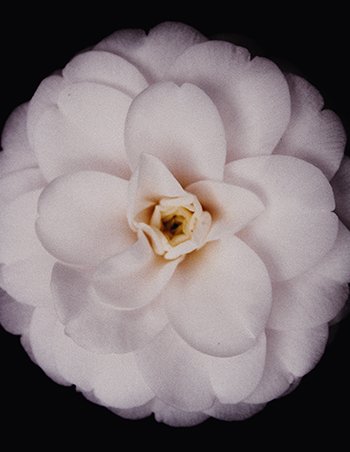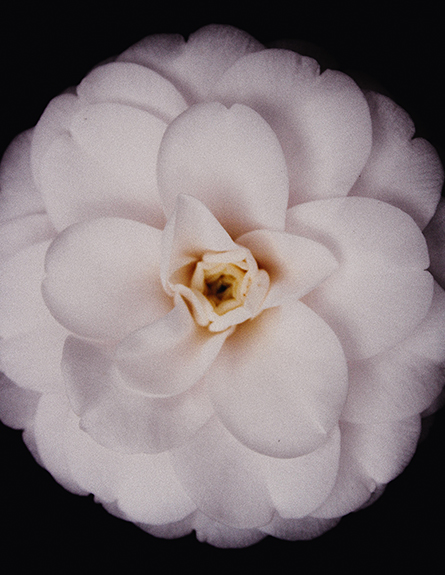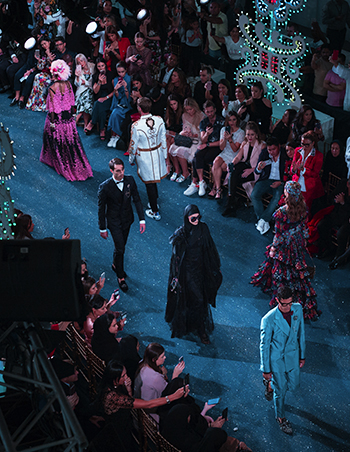
Camellias and Chanel: A Timeless Floral Connection
Date: 04/07/2023
Read the article below to learn how the connection between Chanel and the Camellias started, and why they are still central to the design house’s fashion, skincare, and jewelry aesthetic.
25 is the magic number of petals needed to create the iconic Chanel camellia, but what is the story behind Gabrielle Chanel’s love for the flower? Why are we still seeing it in all of Chanel’s designs today? These have been big questions on my mind since I watched these beautiful blooms take shape during Chanel’s recent show at Paris Fashion Week (article to come about that soon), and I couldn’t help but snoop into the backstory to learn the answers myself. Here is what I found:
What is a Camellia?
A camellia is a many-petaled white, pink, or red flower originally found and cultivated in East and Southeast Asia, ultimately being native to China, and extremely popular in Korea and Japan. In the late 17th century, the camellia was named after a Jesuit priest working in the Philippines, Georg Joseph Kamel, who practiced pharmaceutical botany and was perhaps the first to signify the health and wellness benefits also associated with this flower. Although camellias didn’t make their way over to Europe until sometime in the 18th century, the meaning, symbolism, and significance of the camellia hasn’t changed since their earliest appearance; they have always been a symbol for longevity and faithfulness, desire, passion, and refinement. Indeed, it is said that the camellia represents a union between two lovers; rendering them a representation of eternal love or long-lasting devotion, while the different colors have their own separate meanings:
- White camellias are said to symbolize adoration, and are to be given to a well-liked person
- Pink camellias are said to symbolize longing, and are to be given to someone you miss
- Red camellias are bold, and symbolize strong feelings like love, passion, and deep desire.
Most interestingly, camellias are said to have beneficial properties. One strain of camellia – the camellia sinensis – is for instance used to make most green and black teas thanks to their high levels of caffeine and antioxidant nature. This is not the same bloom that would become popular to Chanel however, who uses the Camellia Japonica Alba Plena in their wide range of skincare products. Indeed, early on Chanel scientists became focused on the flower’s ability to withstand winter frost, as well as its extraordinarily hydrating active molecules–so says Chanel on their website!
Why Did Chanel Love Camellias?
As with all things Chanel, there exists popular ‘lore’ about the origins of the connection between Chanel and the refined camellia. Based on a few articles I read, the story goes something like this:
Around the time Gabrielle ‘Coco’ Chanel was 13, she witnessed a play called The Lady of the Camellias, or La Dame aux Camélias, which features themes of unhappy, unrequited love for the courtesan, Marie Duplessis. Awed by the performance of the actress in the production, and perhaps still inspired by it a few years later, by 1923 Chanel was seen adorning the lapels and belts of Chanel’s own clothes (famously, a chiffon dress), only to have the same design start to appear in her fashion designs as early as 1913. It is here that Chanel’s signature camellia accoutrement was born!

According to Coco herself, the flower was attractive not only because of its beauty and simplicity, but because (as she says) this flower has “the delicacy of not exhaling any perfume, to better offer women the freedom to choose their own”. She began putting the flower everywhere, and it is well-known that she decorated the screens and chandeliers of her apartment and shop on 31 Rue Chambon with the stunning bloom. By the 1950s, Gabrielle had partnered with Maison Lemarié to collaborate on the production of artificial camellias for her designs in velvet, leather, tweed, organza, silk, and satin.
Where Do Chanel’s Camellias Come From?
Recall, Chanel doesn’t just include camellias in their fashion designs; they also incorporate the plant into other products. That means they need equal access to live camellias…not just the fabric and bejeweled versions the design house favors so much. What’s exciting about this is, of the over 40,000 registered camellia cultivars across the globe, Chanel has partnered with only one to govern the care of (and research into) this incredible emblem.
It’s true: fifth-generation grower and plant steward Jean Thoby cultivates all of Chanel’s camellias in a small French village called Gaujacq, employing scientists and botanists to capture the full potential of the bloom. His planetarium has been open to the public since the early 90s, and has been partnered with Chanel in this conservationist initiative almost just as long. In fact, it is said that the particular species of camellia that Chanel uses was set for extinction prior to the communion of these two world-renowned brands. Gabrielle herself is even said to have ordered the seedlings that eventually formed the mother plants Thoby now uses in his production. As a result, Thoby’s and Chanel’s efforts have expanded to include the opening of a designated camellia farm nearby, which utilizes sustainable farming practices. Nowadays, this partnership produces hundreds of thousands of camellias for use in beauty products like the No. 1 de Chanel skincare line, and the Hydra Beauty line. Seed shells from another type of camellia (the camellia oleifera) are even used in the lids of the No. 1 products.
Camellias and Chanel: Past to Present
Seen in leather, fur, satin, tweed, gold, and feather, Chanel’s camellias have been a recognizable, central emblem to Chanel since its humble beginnings in Paris. It is a motif that has appeared on almost every product that has even come out of the design house, including shoes, jewelry, clothing, bags, watches, and packaging. Even the center stage of their show at Paris Fashion Week early 2023 (which I had the pleasure of attending) featured two gigantic camellia blooms! From these large blooms, to the hidden stitched and engraved version of the flower in each piece presented, the whole audience was caught up in just how important this flower still is to the Chanel brand.
With so much room for creative reinvention – showing up now in silk brooches, gold earrings, rings, bracelets, and belt-buckles – the power of the camellia for Chanel is in its versatility. Just look at these two interpretations of the camellia flower by Chanel, both of which were a smash hit with buyers the moment they were released:


With such a deep commitment to their origins, I think it is beyond inspiring to see this distinct focus crop up again and again in Chanel’s many collections. It is as if Gabrielle is still here with us, adding her own timeless, graceful, personal touch to the pieces we see on the runways, and in stores. From the famous Jadrin de Camélias line in 2012, to the Métiers d’Art collection in 2020, to the Haute Joaillerie line in 2021, the camellia has thus evolved beyond its role a simple accent, says creative director Virginie Viard: it “is more than a theme, its an eternal code of the house”…one you can purchase for yourself from Chanel’s Spring/Summer 2023 collection, and beyond.
Floral Inspirations for Springtime
Now that you know a little bit more about the camellia signature and how it is connected to Chanel, I recommend going and looking through your Chanel pieces to see where the camellia might secretly (or not so secretly) appear in the design. Do you see any blooms that you didn’t notice before? Are you even more attracted to the camellia design? I know I am, and sincerely cannot wait to purchase some of the camellia-inspired pieces I saw down the runway in Paris this February.
That said, if you already have some amazing camellia ‘gear’ from Chanel, I want to see it! I always love getting new inspiration from my followers about what they’re wearing, and since this Spring is all about fresh growth and fun florals, I need all the blooming inspiration I can get.
Until next time then my gorgeous flower,

Lena
SUBSCRIBE
Get the latest updates, sneak peeks and more.
 Back To All Posts
Back To All Posts Previous Post
Previous Post

